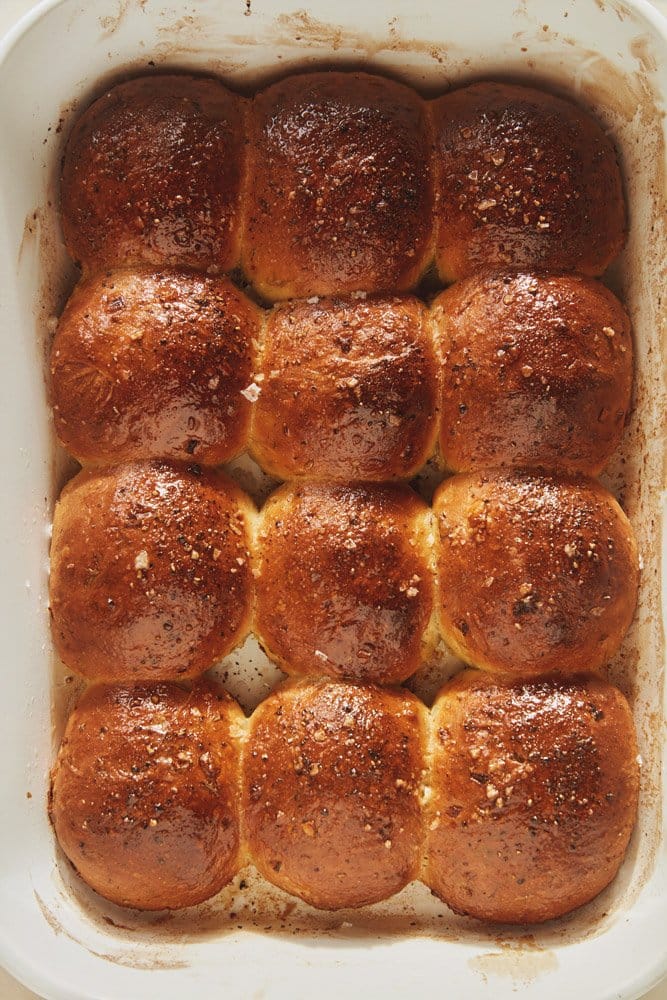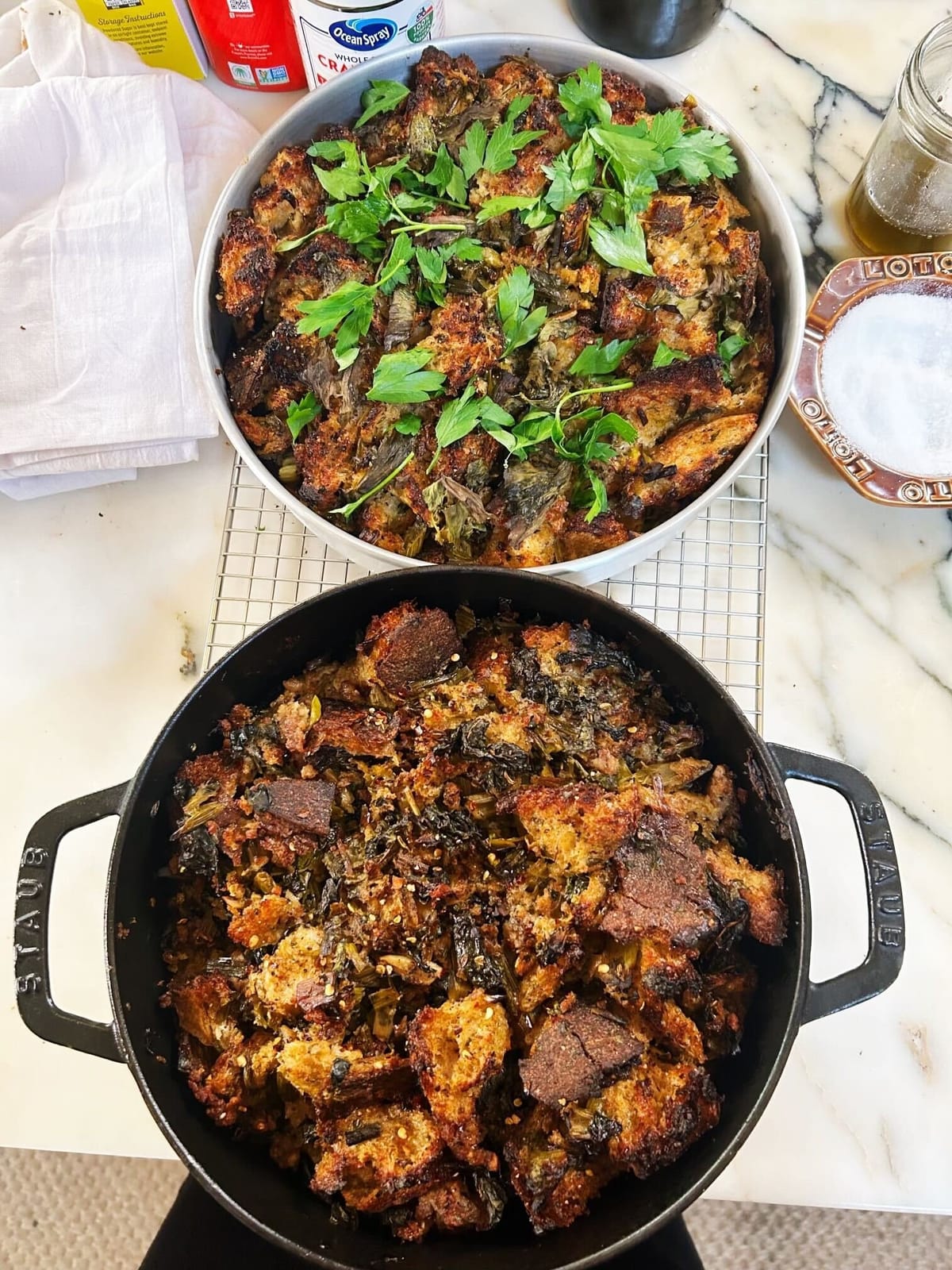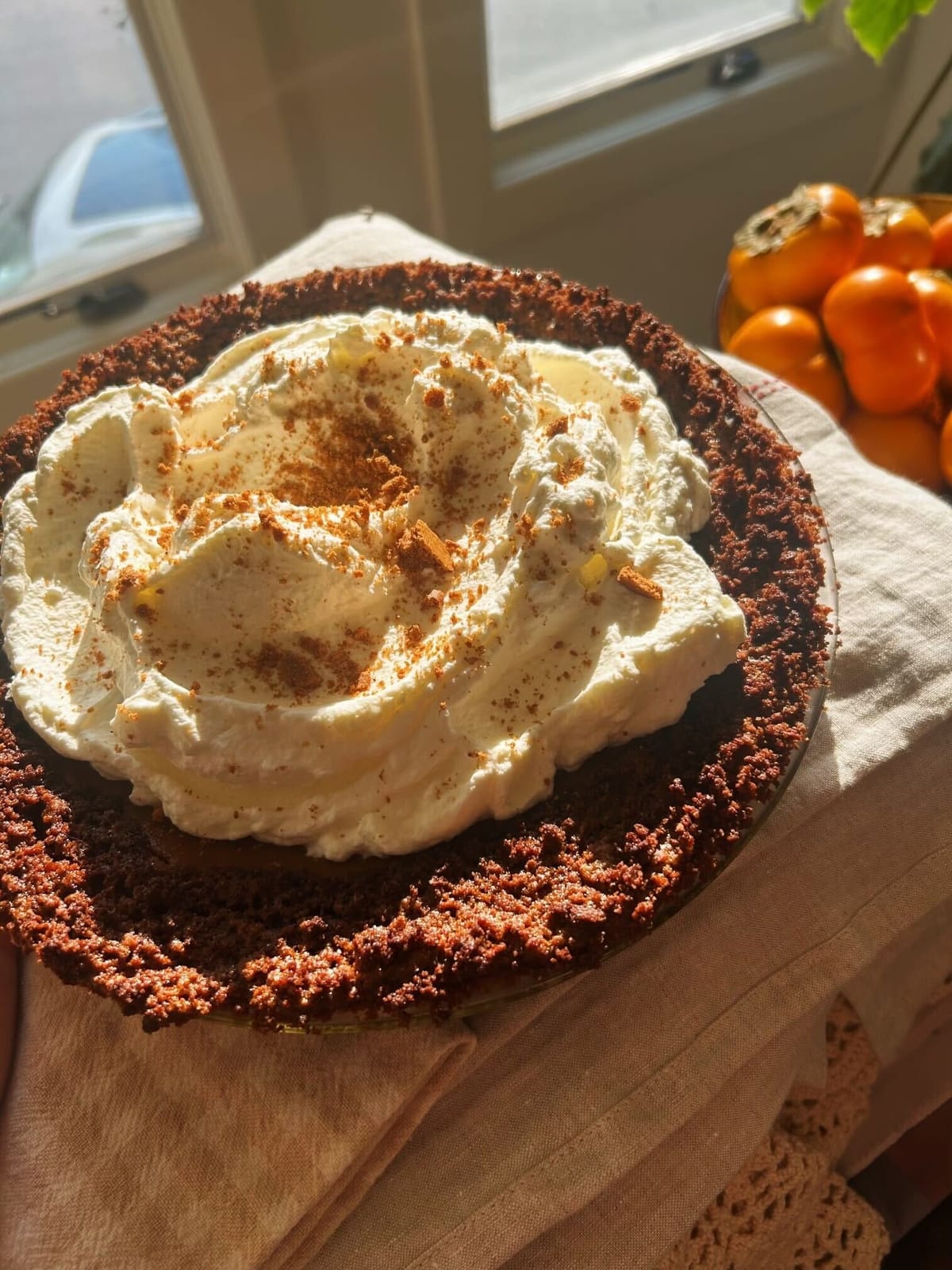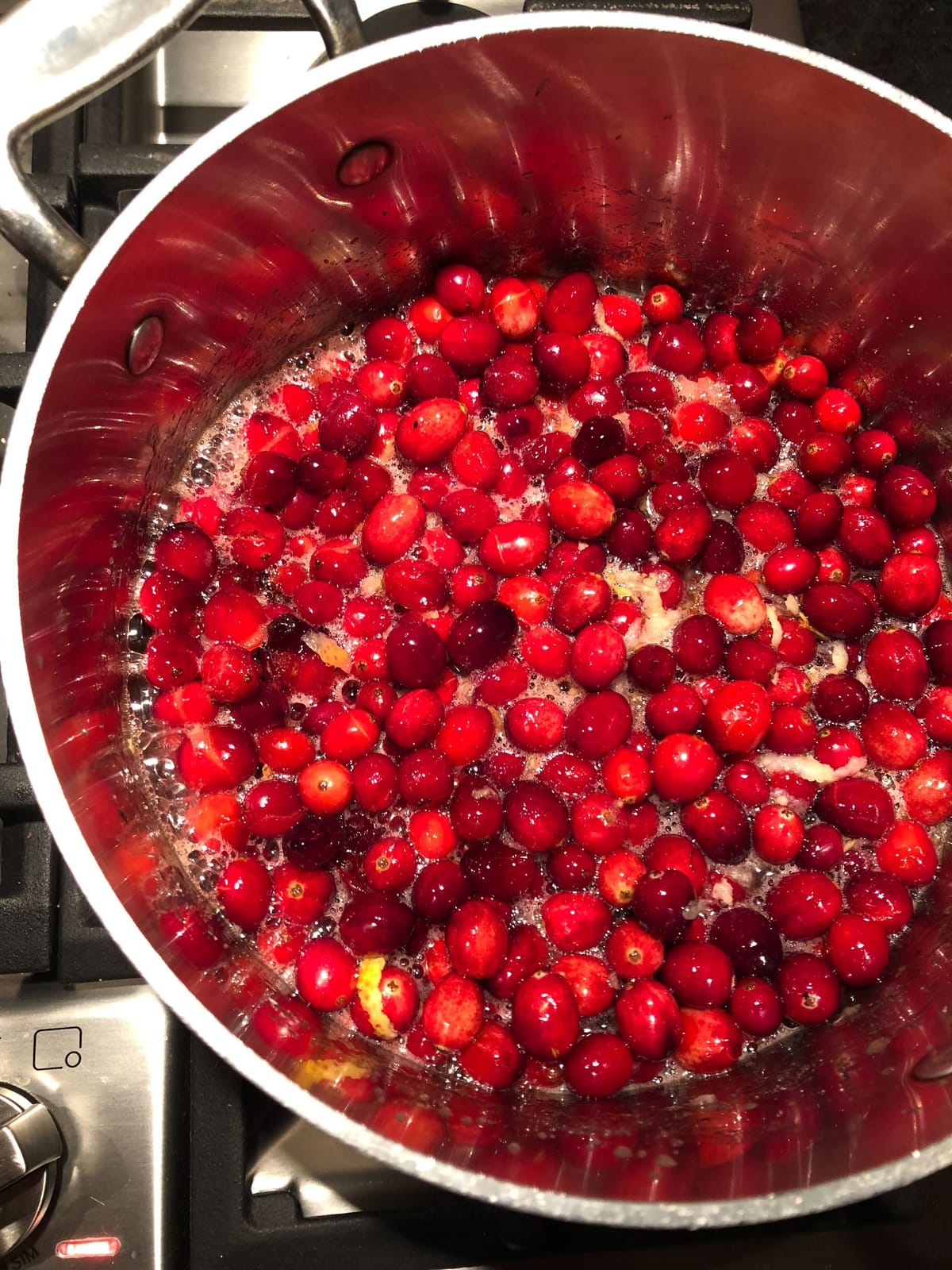Dilly Rolls
These rolls land somewhere between a fluffy roll and a fluffy biscuit, with a crunchy exterior and pillowy interior. Their texture defies logic, and they taste amazing.

YIELD — 12 rolls
Any bread or rolls that show up on your Thanksgiving table are to be considered extra credit. To me, the stuffing is the bread, and it’s the only bread I need. These Dilly Rolls get a pass because I have emotional familial attachment to them (they’re based on my Grandpa Bob’s recipe, my first Thanksgiving memory), and also I love dill. Effectively a no-knead bread with a weak-ish crumb, these Dilly Rolls land somewhere between a fluffy roll and a fluffy biscuit, with a crunchy exterior and pillowy interior. Their texture defies logic, and they taste amazing (dill): What else can I say?
The dough is soft and sticky by design, so resist the urge to add more flour, or they’ll end up heavier and denser than they should be. Feel free to bake them on a sheet tray spaced apart if you prefer the spherical little bun shape vs. the squished roll-in-a-dish look. If dill is not a flavor you enjoy, you could certainly leave it out (the onions give a lot here, too), but also, they’re called Dilly Rolls?
Ingredients
- 1¼ cups (10 ounces) whole milk
- 2¼ teaspoons (1 packet) active dry yeast
- 2 teaspoons (12g) sugar
- 3 cups (450g) all-purpose flour
- ½ cup finely chopped fresh dill (approx 30g)
- ½ small white or yellow onion, finely chopped (approx 80g)
- 2 teaspoons dill seed (I’ve also used caraway or celery seed, both taste great) (optional)
- 2 ¼ teaspoons (7g) kosher salt
- 6 tablespoons (85g) unsalted butter, melted, plus more for the pan and pot
- 1 egg, beaten (or a little buttermilk, milk, heavy cream, or softened butter), for brushing
- Flaky salt and cracked black pepper
- Softened salted butter, for serving
Preparation
- Heat the milk in a small pot over medium heat to a nice, warmer-than-lukewarm temperature. Remove from heat, and whisk in the yeast and sugar, mixing to dissolve both in the milk; set aside.
- Using a wooden spoon, stir the flour, dill, onions, dill seed, and salt in a large bowl. Mix in the warm milk mixture, creating a rough ball of dough. Add in the 6 tablespoons melted butter, and continue to mix, using the wooden spoon to kind of knead the dough until it comes together (it will be soft, but decidedly a dough, not a batter).
- Leave the dough in the bowl, and cover with plastic wrap. Let it double in size at room temperature, about 90 minutes.
- Turn the dough out onto a lightly floured work surface, and divide into twelve even portions. (I find the easiest way to do this is to divide the dough in half, then keep dividing each piece in half, rather than guessing what 1/12th of the dough looks like.)
- Flatten each piece of dough between your palms, then fold the edges to meet each other, making a ball. Smooth the seam by rolling the dough in a tight circle on the countertop. Place each piece of dough in a buttered (or oiled) 3-quart baking dish (I use a regular 9x13), three across, four down (alternatively, bake them on a rimmed baking sheet spaced further apart for a rounder roll shape).
- Preheat the oven to 425°F. Cover with plastic wrap, and let sit in a warm place (like on top of the oven) for 45–60 minutes, until the balls of dough are puffy and touching :).
- To bake, you can brush the rolls with anything you want, but they need something: melted butter, heavy cream, buttermilk, milk, or an egg beaten with a touch of water for an egg wash (I like egg wash for the shine). Then sprinkle the tops of the rolls with flaky salt and cracked black pepper.
- Bake the rolls until they’re deeply golden brown on all sides, have puffed up into what looks like one large-ish roll (unless you’re baking them individually), and feel crunchy and firm when the tops are tapped, 35–40 minutes.
- Remove from heat, and let cool slightly. These rolls really are best eaten the day of, but can be rewarmed in the oven or eaten at room temperature or whatever, honestly who cares, they’re rolls filled with butter and dill, they’re perfect whenever.
DO AHEAD: Rolls can be made and baked a day ahead, wrapped individually in foil or kept in their baking dish.
LEFTOVERS: They make excellent little breakfast sandwiches the next day, but if you want to relive the glory days of a warm roll, simply wrap them in foil and reheat in a 400° oven for 8–10 minutes.




Discussion